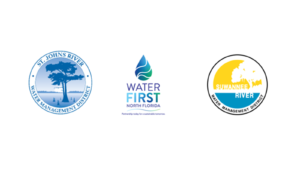By Staff Reports
Floating photovoltaics (FPV), also known as floating solar panels, is a technology that involves installing solar panels on floating platforms on water bodies, such as lakes, reservoirs, or ponds.
The floating platforms are typically made of HDPE plastic to ensure durability and resistance to corrosion. FPV uses all the same electrical equipment as other methods of solar energy; the only difference is the racking system. The system is either connected directly to where the power is consumed, a battery storage system, or to the power grid.

increases their efficiency, as solar panels tend to perform better at lower temperatures.
One of the most critical aspects of floating solar is the anchoring method, especially in locations with high wind forces, currents, or other challenging environmental conditions.
FPV systems are anchored either using percussion anchors that are installed at the bottom of a reservoir or shoreline, or a ballast system in which concrete blocks are lowered to the bottom of the water body.
Both anchoring methods utilize mooring lines, polyester ropes, and/or chains to connect the anchors to the array of panels.
This innovative approach to solar power generation has been gaining popularity in recent years due to its many benefits.
One of the most significant advantages of floating solar is that it doesn’t require the use of any land, which can be scarce and expensive, especially in growing areas and states such as Florida. Additionally, land not used for solar panels can be developed or preserved for other uses such as conservation or agriculture.
Floating solar panels also promote an increased energy production compared to other traditional forms of solar; this is due to the cooling effect of the water, which reduces the temperature of the panels and increases their efficiency, as solar panels tend to perform better at lower temperatures.
Floating solar has positive impacts on the bodies of water as well. The shade provided by the panels reduces the growth of algae and other aquatic plants that thrive in direct sunlight, preventing the risk of harmful algal blooms or the need for chemicals required to treat the water and/or control such growth.
The shading effect of floating solar also reduces water evaporation. This is particularly beneficial in areas with high temperatures and low rainfall.
By reducing evaporation, floating solar can help to conserve water resources and increase availability of water for other uses, such as agriculture and drinking water supply.
While FPV is not as common in the United States as it is in Asian Pacific countries, it is gaining considerable traction.
Currently, D3Energy has installed the most systems in the United States and all of the systems in Florida.
Some of the projects are for major entities like Florida Power & Light, Duke Energy, Comcast, Orlando and Miami International Airports, the U.S. Army, and many others.
The future of floating solar looks promising as more and more countries and communities are turning to this technology to generate renewable energy.
The numerous advantages, such as land and water conservation make floating solar more desirable. Currently all of the solar built in the United States represents about 5% of the power produced.
NREL (nrel.gov) recently performed a study that shows the available non-navigable bodies of water in the United States could float 10% of the power needed.
The future is bright for floating solar.●
























